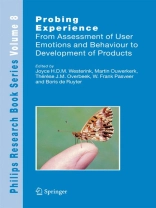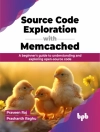Fred Boekhorst Steady progress in Information and Communication technology has advanced the Internet, once merely a tool for exchange of scientific infor- tion between universities, to a platform that enables the transformation of our society. In this new, digital society, people can take more informed decisions because of new mechanisms for finding what you’re looking for [Google], new mechanisms of accessing background knowledge [Wikipedia], new ways of engaging with one another [chat], new ways of trading goods [e-Bay] and many more. While these represent already profound changes in our lifestyle, the effects of digitizing society have just begun. So far, the Internet has made information accessible through computer screens but the next wave will be “The Internet of Things”. Environments will become smart and responsive to the presence of people and objects. The key underlying technology here is embedded sensor technology that allows sensors to monitor people and their environment and to communicate me- urements. The combination of the Internet [representing Intelligence and p- vasiveness] and sensor networks [representing Ambient probing] will unlock many new applications, for example in the field of optimized logistics, smart agriculture or more intelligent living environments. At Philips, we have set up three different laboratory environments that aim to research how an int- ligent environment could help people. One of those environments is called “Care-Lab” in which we investigate how technology could help elderly ma- tain an independent lifestyle.
İçerik tablosu
Probing in Order to Quantify.- Experience in Products.- Inquiring about People’S Affective Product Judgements.- Atmosphere Metrics.- In Search of The X-Factor to Develop Experience Measurement Tools.- Probing Experiences: Logs, Traces, Self-Report and A Sense of Wonder.- Objective Emotional Assessment of Industrial Products.- Measuring Experiences in Gaming and TV Applications.- Sensing Affective Experience.- Brain, Skin and Cosmetics: Sensory Aspects Objectivated by Functional Magnetic Resonance Imaging.- The Assessment of Stress.- Discovery of T-Templates and Their Real-Time Interpretation Using Theme.- Probing in Order to Feed Back.- Where Will The User “Drive” Future Technology?.- A Wearable Emg Monitoring System for Emotions Assessment.- Computing Emotion Awareness Through Galvanic Skin Response and Facial Electromyography.- Unobtrusive Sensing of Psychophysiological Parameters.- It’S Heart Rhythm Not Rate That Counts.- TRansformative Experience on The Home Computer.- The Emotional Computer Adaptive to Human Emotion.- Using Physiological Measures For Task Adaptation.- The Usability of Cardiovascular and Electrodermal Measures for Adaptive Automation.












